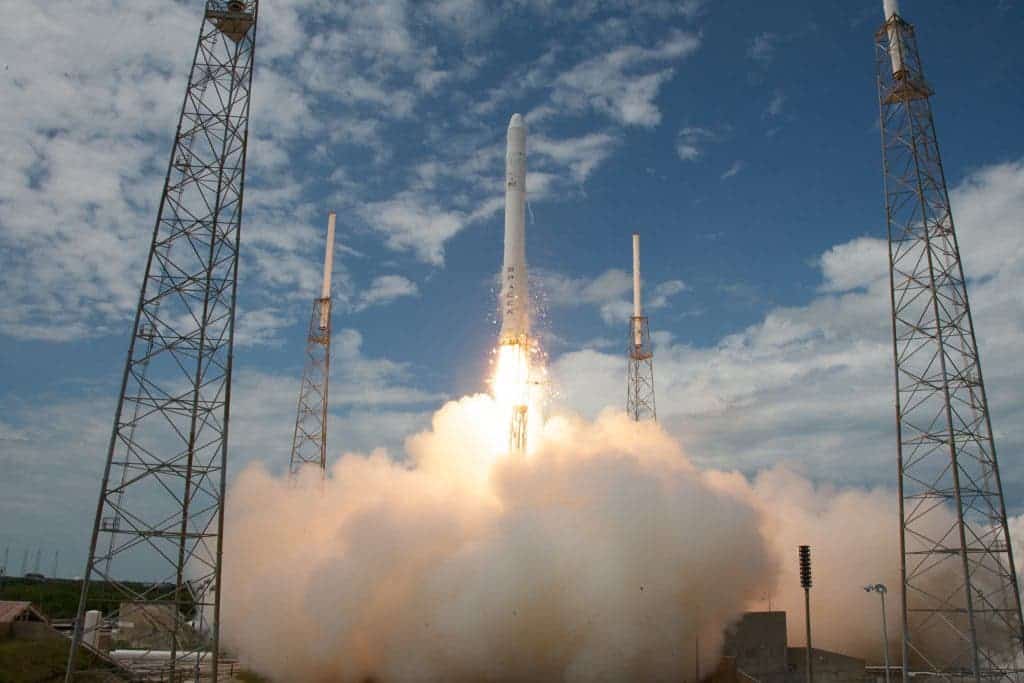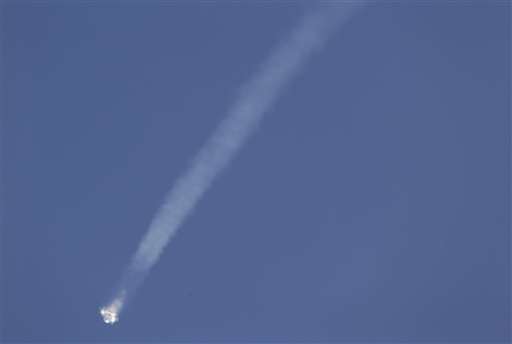Today was a bad day for science after SpaceX’s Falcon 9 rocket exploded shortly after taking off from Cape Canaveral, Florida. The rocket was unmanned and no one got hurt. This is the second successive botched mission whose goal was to re-supply the International Space Station, and the third in the past 8 eight months. The Dragon Capsule was supposed to reach the space station with 5,200 pounds of space station cargo, including the first docking port designed for future commercial crew capsules and the custom tailored Microsoft HoloLenses for virtual reality.

The rocket failed some 2 and half minutes after it launched when a sudden white cloud emerged where the rocket was supposed to be and fiery pieces of debris started falling into the Atlantic. The cause is yet unknown, but a likely candidate is an over pressurization of the rocket’s upper stage liquid-oxygen tank. SpaceX’s President Gwynne Shotwell shortly issued a statement to reporters shortly after the accident assuring the company is working hard to find the problem, fix it “and get back to flight.”
There was an overpressure event in the upper stage liquid oxygen tank. Data suggests counterintuitive cause.
— Elon Musk (@elonmusk) June 28, 2015
That’s all we can say with confidence right now. Will have more to say following a thorough fault tree analysis.
— Elon Musk (@elonmusk) June 28, 2015
Nevertheless this is a huge setback for NASA. It’s the third blow in the gut in just a couple of months. Previously, a Russian cargo flight burned up upon re-entry in April, while last October an Orbital Sciences Corp. cargo mission didn’t even make it past the first couple seconds following launch. However, this is only the first SpaceX accident under an ISS-resupply contract. The previous seven missions ran exceedingly well, without any major complication.

“One inevitable failure for such a young system should not in any way shake anyone’s faith in the rocket or the team. What’s amazing is that it took this long to happen,” said Mike Gold, business operations director with Nevada-based Bigelow Aerospace.
Things like this happen. After all, we’re talking about launching things into space, which is never easy. At the same time, this doesn’t look too well for SpaceX which eventually wants to send astronauts to the International Space Station and faces steep competition from Boeing. Losing cargo is one thing, but human lives that’s another story.
“This was a blow to us. We lost a lot of research equipment on this flight,” NASA Associate Administrator Bill Gerstenmaier told a news conference.
The Dragon Capsule was supposed to sent food, supplies and some equipment for science experiments for the astronauts aboard the station. Despite the accident, the astronauts and their missions aren’t in danger, according to NASA’s space station program manager, Mike Suffredini, who said the outpost had enough supplies on board to make it to October or so. This Friday, a Russian Soyuz rocket will launch for a new resupply mission..






